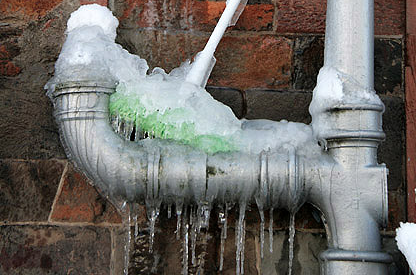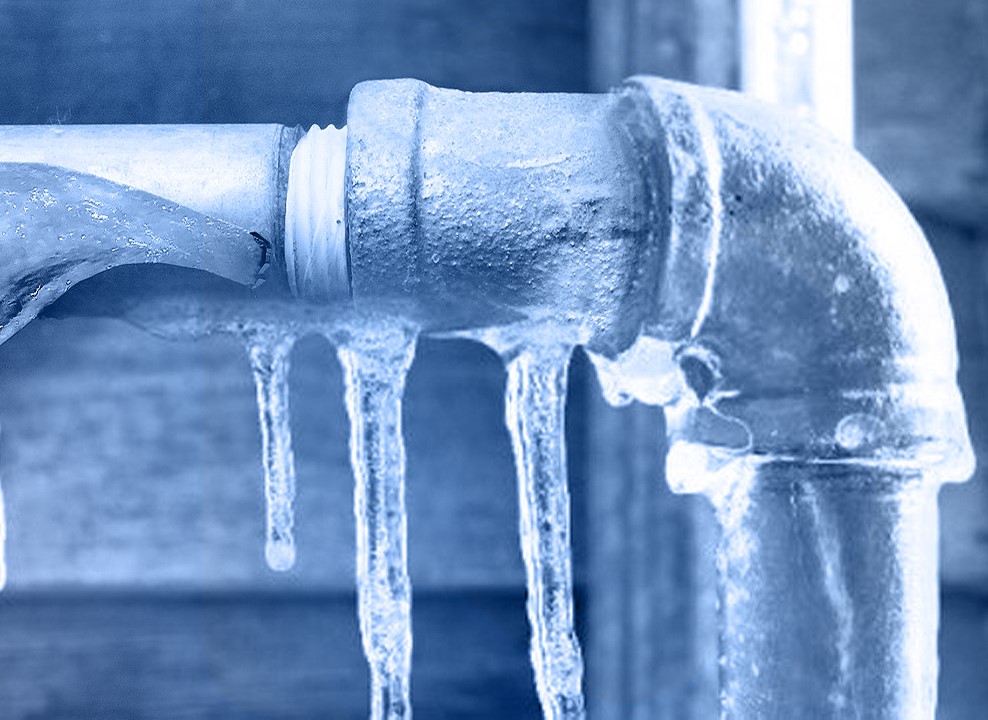How to Protect Your Plumbing from Cold Weather: Essential Tips
How to Protect Your Plumbing from Cold Weather: Essential Tips
Blog Article
Listed here below you can discover a lot of sound help and advice with regards to Prevent Frozen Pipes .

Cold weather can wreak havoc on your pipes, especially by freezing pipes. Below's exactly how to prevent it from taking place and what to do if it does.
Introduction
As temperature levels drop, the threat of frozen pipelines boosts, possibly resulting in pricey repairs and water damages. Understanding exactly how to stop icy pipes is vital for homeowners in cool environments.
Recognizing Frozen Pipes
What causes pipes to freeze?
Pipes freeze when revealed to temperatures below 32 ° F (0 ° C) for prolonged durations. As water inside the pipelines freezes, it broadens, taxing the pipe walls and possibly triggering them to burst.
Risks and damages
Icy pipelines can lead to water system interruptions, residential property damages, and costly repair work. Burst pipes can flood homes and trigger comprehensive structural damages.
Indications of Frozen Piping
Identifying frozen pipelines early can stop them from bursting.
Just how to recognize icy pipes
Seek decreased water circulation from taps, unusual odors or noises from pipelines, and visible frost on exposed pipes.
Avoidance Tips
Insulating at risk pipes
Wrap pipelines in insulation sleeves or use warm tape to shield them from freezing temperatures. Focus on pipes in unheated or external locations of the home.
Heating techniques
Keep interior areas sufficiently warmed, specifically locations with pipes. Open up closet doors to permit cozy air to circulate around pipes under sinks.
Safeguarding Exterior Plumbing
Garden pipes and exterior faucets
Separate and drain pipes garden tubes prior to wintertime. Install frost-proof faucets or cover outside taps with protected caps.
What to Do If Your Pipes Freeze
Immediate actions to take
If you believe frozen pipes, maintain taps open up to eliminate stress as the ice thaws. Utilize a hairdryer or towels taken in hot water to thaw pipelines gradually.
Long-Term Solutions
Structural modifications
Think about rerouting pipes far from outside wall surfaces or unheated areas. Add additional insulation to attic rooms, cellars, and crawl spaces.
Updating insulation
Invest in high-quality insulation for pipes, attics, and wall surfaces. Proper insulation assists keep regular temperatures and minimizes the threat of frozen pipes.
Final thought
Preventing frozen pipes needs positive actions and fast responses. By comprehending the causes, indications, and safety nets, house owners can secure their pipes throughout cold weather.
5 Ways to Prevent Frozen Pipes
Drain Outdoor Faucets and Disconnect Hoses
First, close the shut-off valve that controls the flow of water in the pipe to your outdoor faucet. Then, head outside to disconnect and drain your hose and open the outdoor faucet to allow the water to completely drain out of the line. Turn off the faucet when done. Finally, head back to the shut-off valve and drain the remaining water inside the pipe into a bucket or container. Additionally, if you have a home irrigation system, you should consider hiring an expert to clear the system of water each year.
Insulate Pipes
One of the best and most cost-effective methods for preventing frozen water pipes is to wrap your pipes with insulation. This is especially important for areas in your home that aren’t exposed to heat, such as an attic. We suggest using foam sleeves, which can typically be found at your local hardware store.
Keep Heat Running at 65
Your pipes are located inside your walls, and the temperature there is much colder than the rest of the house. To prevent your pipes from freezing, The Insurance Information Institute suggests that you keep your home heated to at least 65 degrees, even when traveling. You may want to invest in smart devices that can keep an eye on the temperature in your home while you’re away.
Leave Water Dripping
Moving water — even a small trickle — can prevent ice from forming inside your pipes. When freezing temps are imminent, start a drip of water from all faucets that serve exposed pipes. Leaving a few faucets running will also help relieve pressure inside the pipes and help prevent a rupture if the water inside freezes.
Open Cupboard Doors
Warm your kitchen and bathroom pipes by opening cupboards and vanities. You should also leave your interior doors ajar to help warm air circulate evenly throughout your home.

As a reader about Helpful Tips to Prevent Frozen Pipes this Winter, I imagined sharing that piece of content was a great idea. Do you know somebody else who is in to the niche? Please feel free to promote it. We value reading our article about Prevent Frozen Pipes .
Quote Report this page